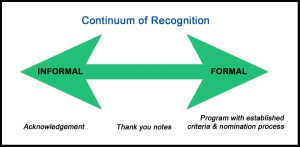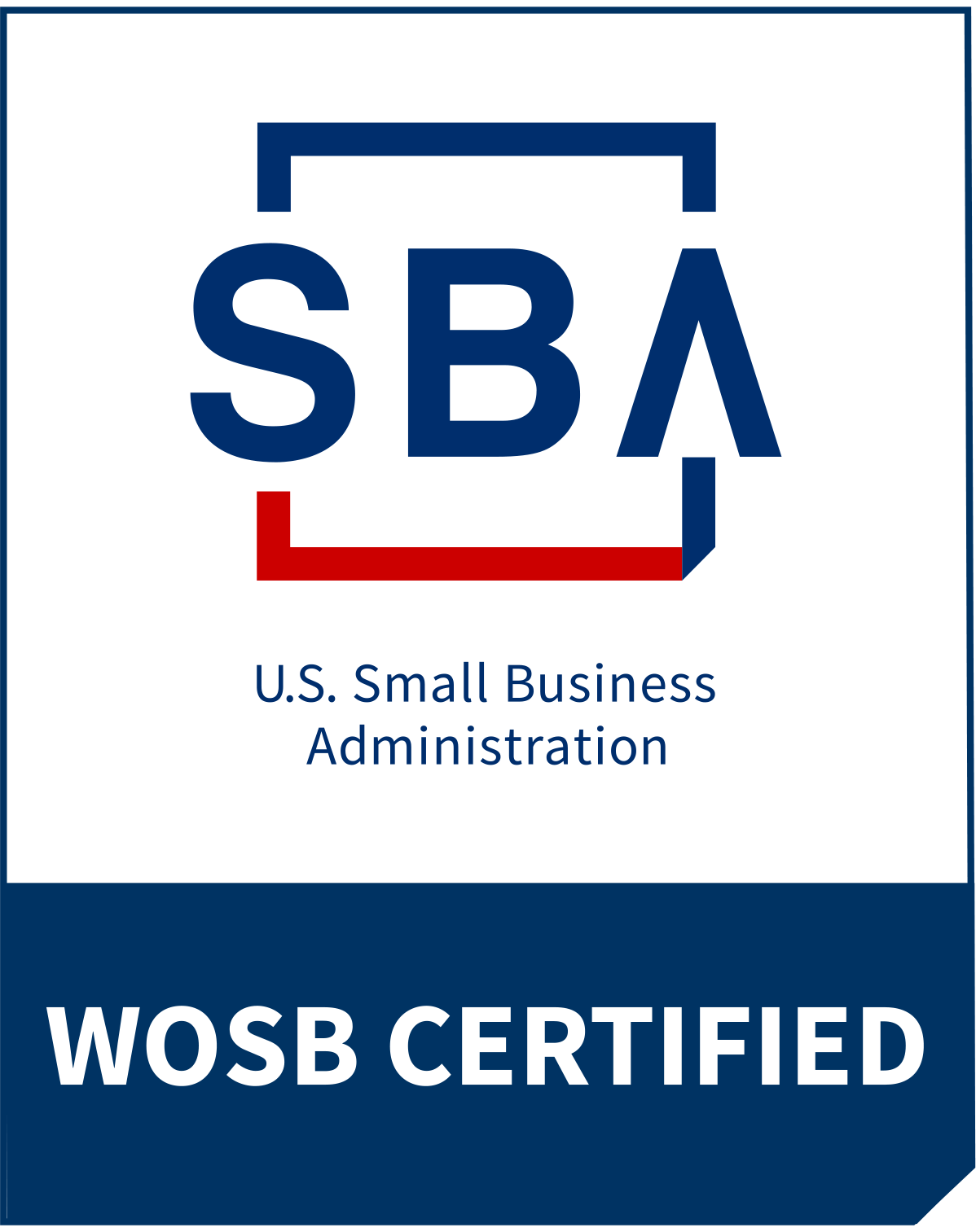THOUGHT LEADERSHIP:
Creating a Culture that Values Recognition in a Fiscally Constrained Environment
by Melissa Neidermeyer and Salina Diiorio
A significant challenge facing many government agencies is how to demonstrate to employees that they are valued and appreciated with limited financial resources. Recognition can play a key role in boosting morale, keeping employees engaged, generating and sustaining loyalty, and helping employees feel valued. Recognition can be expressed through a variety of forms such as a personal thank you, public acknowledgement of contributions, access to professional development opportunities, and team celebrations. CG Strategy, together with our partner Celeste Garcia (Vision Consulting, LLC), has worked with clients at the Federal Emergency Management Agency (FEMA) to build tools and messaging to support a culture that values recognition. In this article, we share a few of the key takeaways from these efforts.
Building a Culture of Recognition
Reward the right things in the right ways. Ensure that the work or contributions being acknowledged merit recognition, and that the recognition a person receives is commensurate with their contribution. What types of contributions should be recognized? That can vary among organizations, but can include anything from performing daily functions consistently and reliably, to performance that goes “above and beyond” regular job duties.
If you want to build a culture that values recognition, it is important to encourage people across the organization to acknowledge one another, express gratitude, and act in ways that convey appreciation and respect. Perhaps most importantly, model the behavior you would like to see yourself. Other factors to consider include: Reward the right things in the right ways. Ensure that the work or contributions being acknowledged merit recognition, and that the recognition a person receives is commensurate with their contribution. What types of contributions should be recognized? That can vary among organizations, but can include anything from performing daily functions consistently and reliably, to performance that goes “above and beyond” regular job duties. Types of recognition fall on a continuum (as illustrated in the figure), from informal to formal, and need to be matched to the type of contribution being recognized. For example, an informal way for a supervisor to express appreciation for a job well done could be a simple verbal or written thank you. Significant accomplishments that promote the organization’s strategic plan and/or mission could warrant formal recognition through a quarterly or annual awards ceremony.
 Types of recognition fall on a continuum (as illustrated in the figure on the right), from informal to formal, and need to be matched to the type of contribution being recognized. For example, an informal way for a supervisor to express appreciation for a job well done could be a simple verbal or written thank you. Significant accomplishments that promote the organization’s strategic plan and/or mission could warrant formal recognition through a quarterly or annual awards ceremony.
Types of recognition fall on a continuum (as illustrated in the figure on the right), from informal to formal, and need to be matched to the type of contribution being recognized. For example, an informal way for a supervisor to express appreciation for a job well done could be a simple verbal or written thank you. Significant accomplishments that promote the organization’s strategic plan and/or mission could warrant formal recognition through a quarterly or annual awards ceremony.
Treat people as individuals. Recognition is never a “one size fits all” proposition. In order to make it meaningful, managers need to consider the preferences of each of their staff members. According to management experts Rodd Wagner and James Harter in their book The 12 Elements of Great Managing, discovering the type of feedback that means the most to employees is one of the most effective ways to recognize them. For example, people who are more introverted may prefer a private acknowledgment of their contributions, while extroverts may really appreciate the opportunity to be recognized at a team meeting. Don’t know what your staff members prefer? Ask them as part of their formal performance review meeting, via an employee survey, or just have an informal conversation about it.
Build credibility by being consistent and fair. According to Thomas Wilson, author of Innovative Reward Systems for the Changing Workplace, to be credible, recognition should be justified or earned based on an action or result. It should also be consistently applied according to standards that are clearly communicated to supervisors and staff. An effective way to do this is developing annual recognition plans, outlining how staff throughout the organization will promote both formal and informal recognition. The importance of recognition and the organization’s commitment to it can also be demonstrated by including a recognition-related performance measure for all levels of management.
Be creative with the resources you have. Don’t use resource constraints as an excuse not to recognize staff accomplishments and contributions. Find creative ways to celebrate individual and group wins, both big and small, which are within your means. There are many low- and no-cost ways to show staff that they are appreciated, even when budgets are tight. Check out some examples of informal recognition below. A quick web search will also generate some great recognition ideas.
Informal Recognition Examples
- Send thank you notes (paper or electronic)
- Acknowledge individual and group accomplishments to senior management
- Ask senior management to thank an individual or group (verbal or written)
- Create opportunities to attend meetings / present work to management
- Incorporate recognition into team and all hands meetings
- Support an individual’s career development goals
- Provide opportunities for diverse assignments
- Organize team lunches/pot lucks
- Distribute small tokens of thanks (candy, stickers, trinkets, mugs, apparel, etc.)
- Create and distribute certificates and plaques
In a fiscally constrained environment, investing time to build
a culture that values recognition can go a long way
toward showing employees they are appreciated.
Encourage your managers and employees to find ways
to regularly incorporate recognition into their work days.




